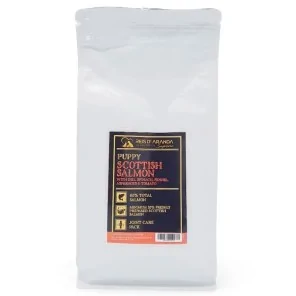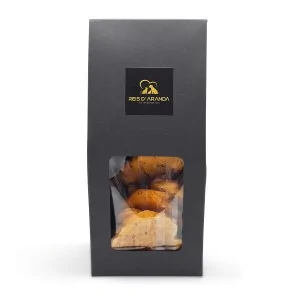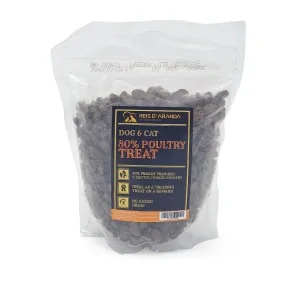The Tornjak originated from genetically homogeneous, almost extinct, indigenous shepherd dogs. These dogs have...
THE TECKEL
THE ORIGIN OF THE DACHSHUND
The German Dachshund, also called Dackel or Dachshund, has been known in Germany since the 15th century from engravings and paintings of hunting. Descendants of the old German hounds known as Deutsche Bracke (Bavarian Blood Hound) they were also called badger-dogs or diggers. The Teckel we know today is the product of selection by crossing small dogs of the terrier type. With the scent of the scenthound and their elongated body, they are able to burrow underground, and together with their enthusiasm, courage and bravery for the hunt, they are difficult for other dogs to overcome.
Control of the breed began when the first standard was written and the Deutscher Hunde-Stammbuch (German Hunde-Stammbuch) was founded in 1840. Shorthaired and longhaired dogs were registered in it, and from 1890 onwards the wire-haired dogs were added.
The Teckelklub, founded in 1888, which organised the beauty shows, and the Gebrauchsteckel Klub, which organised the hunting activities, were initially the bodies which established the controls for the development of the breed.
The original breed is considered to be the Shorthaired Dachshund, although it is not clear exactly which dogs were used for the selection of the breed.
To obtain the long-haired Dachshund, crosses were made with Cockers and Wachtelhundes (German Spaniels). The wire-haired variety appeared half a century later and was obtained by crossing short or smooth-haired dogs with Schnauzers, Dandie Dimon Terriers and, perhaps, Scottish Terriers.
The FCI (Federation Cynologique Internationale) has registered three sizes for the Dachshund: standard, miniature and kaninchen, but the AKC (American Kennel Club) and the KC (Kennel Club) allow only two sizes: standard and miniature.
THE STANDARD OF THE TECKEL
The following is the FCI standard, which defines what a Dachshund should look like in all its varieties, including coat types, the colours of each variety and the peculiarities of each one:
- GENERAL APPEARANCE: Short, with short limbs, elongated, but compactly built, very muscular, the head is carried jauntily and defiantly, with alert facial expression. Its conformation allows for agile and fast work above and below ground. Sexual dimorphism is evident.
- IMPORTANT PROPORTIONS: The distance from the chest to the ground should be one third of the height at the withers, the length of the body (from the point of the sternum to the end of the croup) should be in harmonious relation to the height at the withers.
- HEAD : Elongated and narrow (as well as the muzzle), the skull is flat and the stop (junction of the muzzle with the skull) is not very marked. The jaw is strong and must be shown in scissor bite, fully complete (42 teeth).
- EYES: Medium size, almond-shaped, set wide apart, with energetic but friendly expression, not piercing. Colour dark reddish brown and shining to blackish brown in all dog coat colours. Light or light-spotted eyes in harlequin dogs are not desirable, but should be tolerated. Eyelids well pigmented.
- EARS: Set on high, not too far forward, long enough to reach the corner of the mouth, but not much longer. Rounded. Mobile, with the front edge close to the cheeks.
- BODY: The neck is long and muscular, without folds or dewlap, the loin is broad, strong and muscular, the chest is broad and oval, with ribs arched backwards and sternum strongly marked. The back should be straight.
- HINDQUARTERS : Short, straight and very strong.
- TAIL: Straight and harmonious, well muscled (to be able to pull them out of the burrows), a slight curve in the last third, when in movement, is permissible.
- MOVEMENT: Fluid and energetic.
- FAULTS: Any deviation from this standard which has consequences for the health and welfare of the dog and prevents it from performing its function. Pincer bite.
- DESCALIFICATIONS: Weak anatomy, legs too long or legs too short (dog appears to be crawling on the ground), eyes light or mottled in dogs other than Merle, arched or carried back, pointed or folded ears, prognathism, cow hocks (close together) or barrel hocks (apart), open wrists, depigmentation of nose, nails, eyelids or lips, heavy or clumsy movement. Obesity or anorexia, clear signs of neglect or mistreatment.
COAT TYPES AND COLOURS OF THE DACHSHUND
SHORT COAT: Short, dense, glossy, smooth, tight and harsh. No lightening on any part of the body.
- PERMITTED COLOURS FOR THE SHORT HAIRED DACHSHUND:
- -SOLID RED: Deep tan, uniform. A small white patch of up to 3 mm on the chest is permitted. Black hairs are permitted but not desirable. Nails, pads and eyes black.
- BICOLOR: Black & Tan (Black/Fire) and Brown & Tan (Brown/Fire) are permitted. The black or brown areas should be uniform and intense, shiny; the tan areas should be well defined. The nose, nails and pads are black in dogs with black ground colour and brown in dogs with brown ground colour.
Only a small patch of white hair (up to 3 cm in diameter) on the chest is permitted. Too extensive or insufficient tan markings are highly undesirable.
- MERLE (Harlequin): The base colour is always dark (black or brown), with the exception of the red merle (red with dark markings). Irregular grey or beige patches (not too large) are desirable, the dark or light colour never predominating.
- BRINDLE: The colour of the Dachshund brindle is red with dark tiger markings. The nose, nails and pads are black.
All colours or colour patterns not mentioned above are disqualifying. Lack of pigmentation is highly undesirable.
WIREHAIRED: With the exception of the muzzle, eyebrows and ears, the outer coat should be even, close fitting, dense, harsh and with undercoat. Soft or downy coat on head (top knot) and legs is not desirable. The muzzle has a well defined beard.
The eyebrows are bushy. The hair on the ears is shorter than on the body, almost short. The tail should be evenly covered with close lying hair.
- PERMISSIBLE COLOURS FOR THE WIREHAIRED DACHSHUND:
- SOLID RED
- MULTICOLOUR: Boar, brown boar, black with tan markings or brown with tan markings. The darker the tan markings the better and as clean as possible, above the eyes, on the sides of the muzzle and lower lip, on the inner edge of the ears, on the forechest, on the inside and back of the limbs, on the feet, around the anus and from there to one third or half of the lower part of the tail. The nose, nails and pads are black in boar and black and tan dogs, in brown boar and brown dogs with tan markings, the nose, nails and pads are brown. Only a small patch of flat hair (up to 3 cm in diameter) on the chest is permissible. Too extensive or insufficient tan markings are highly undesirable.
- MERLE
- BRINDLE
LONG HAIR: Smooth and glossy, close fitting to the body, with undercoat. Longer under the neck and on the lower part of the body. On the ears, the hair goes beyond the lower contour of the ears. Longer hair in the form of feathers on the back of the limbs. The longest hair is on the underside of the tail where it forms a full flag.
- PERMISSIBLE COLOURS FOR THE LONG HAIRED DACHSHUND:
- SOLID RED
- BICOLOR
- MERLE
- BRINDLE
COLOURS NOT PERMITTED:
- BLUE (DILUTED BLACK)
- LILAC (BLUE X CHOCOLATE)
- ISABELLA (BROWN/CHOCOLATE DILUTED)
- BLACK AND BRINDLE
- PIEBALD (SPOTTED)
- DOUBLE MERLE
- WHITE (WITH DARK EYES AND PIGMENTED NOSE, NAILS AND PADS)
- CREAM
- ALBINE (WITH LIGHT EYES, DEPIGMENTED PADS, NAILS AND NOSE)
DACHSHUND SIZES
Unlike other breeds, the Dachshund is not measured at the withers (withers-floor) to know its exact size, but the thoracic perimeter is measured, this measurement is done with a flexible metre at the (minimum) age of 15 months.
STANDARD TECKEL (9-12kg):
- MALES: over 37 cm - up to 47 cm.
- FEMALES: over 35 cm - up to 45 cm
TECKEL MINIATURE (5-7kg):
- MALES: over 32 cm - to 37 cm
- FEMALES: more than 30 cm - up to 35 cm
DACHSHUND KANINCHEN (3-5kg):
- MALES: 27 cm - up to 32 cm
- FEMALES: 25 cm - up to 30 cm
HEALTH OF THE DACHSHUND
The Dachshund is generally a healthy breed and breeding is completely safe if the typical health tests for the breed are carried out, as well as a good selection of breeding stock. The health tests to be carried out are dictated by the national club (Teckel Club de España) and the DTK (Deutscher Teckel Klub) in Germany.
The recommended health tests are as follows:
- IMPERFECT OSTEOGENESIS: This disease causes the bones to break extremely easily and without apparent cause. It also causes brittle teeth and has been called ‘pink tooth disease’. Puppies affected by the disease usually die within the first few days of life. Surviving puppies have brittle bones and suffer from deformities. At present, the existence of milder forms of osteogenesis that will affect dogs later in life cannot be excluded.
- PRA [Progressive Retinal Atrophy]: There are two types of photoreceptor neurons in the retina: rods (located more in the periphery of the retina) and cones (located closer to the centre). These photoreceptors gradually deteriorate so that the retina is no longer able to capture light and, as it is unable to send information to the brain, the animal gradually stops seeing. In many cases, it is difficult to detect and the owner is not aware of it until the disease is very advanced.
Other typical diseases of the Dachshund (for which there are no prior laboratory tests) are as follows:
- EPILEPSY: Epilepsy is the most common neurological problem in dogs. It is a chronic neurological disorder characterised by recurrent epileptic seizures. An epileptic seizure is a clinical manifestation of abnormal neuronal activity in the cerebral cortex.
Epilepsy is not a disease but a clinical sign that localises a lesion at the level of the cerebral cortex, it can be hereditary (arising before the age of 6 months) or acquired (through a brain lesion).
- DISCAL DISEASE (DISD): Intervertebral disc disease (IDD) is one of the most common causes of neurological disease in dogs.
Degeneration of the intervertebral discs occurs with age and there are two types: chondroid degeneration and fibroid degeneration.
- CATARACTS: There are several causes of cataract disease in dogs. One of them may be by nature or due to the dog's advanced age, as we have already mentioned above, due to the rupture of the crystalline lens. But there are also other causes of cataracts in dogs, such as trauma, injury, inflammation of the eye or diabetes. However, the most common cause, or the one most commonly diagnosed, is hereditary cataracts. Age is not a determining factor in this cause as they can appear when the animal is young.
- DOUBLE MERLE: It happens when two merle puppies are crossed, generally the double merle puppies die in the uterus and are reabsorbed, but others survive the birth and reach adulthood. Having two copies of the gene results in blindness, deafness and ocular malformations (micro-ophthalmia, lack of one or both eyes...) and sterility. When we have a puppy born to a merle sire or dam, we must carry out the necessary genetic tests to find out whether or not it is a carrier of the gene, especially if they are red puppies. This test is compulsory at the DTK (Deutscher Teckel Klub).
THE PERSONALITY OF THE DACHSHUND
In spite of its small size, the Dachshund stands out for its great courage and stubbornness, being able to face other much bigger and stronger animals without any problem. They are sociable, but it is necessary to work with them so that they do not become reactive with children or strangers.
The Dachshund is a breed with a strong hunting instinct, reflected in the ‘heartbeat’ they make when detecting possible prey; it is not advisable to keep them with small pets such as rabbits or guinea pigs, as it is likely to end badly.
CONCLUSION
The Dachshund is a fantastic breed with great energy and hunting potential, but it is also a great pet for people who want to work with it and give it everything it needs (physically and mentally).
Leave a comment
Log in to post comments
















